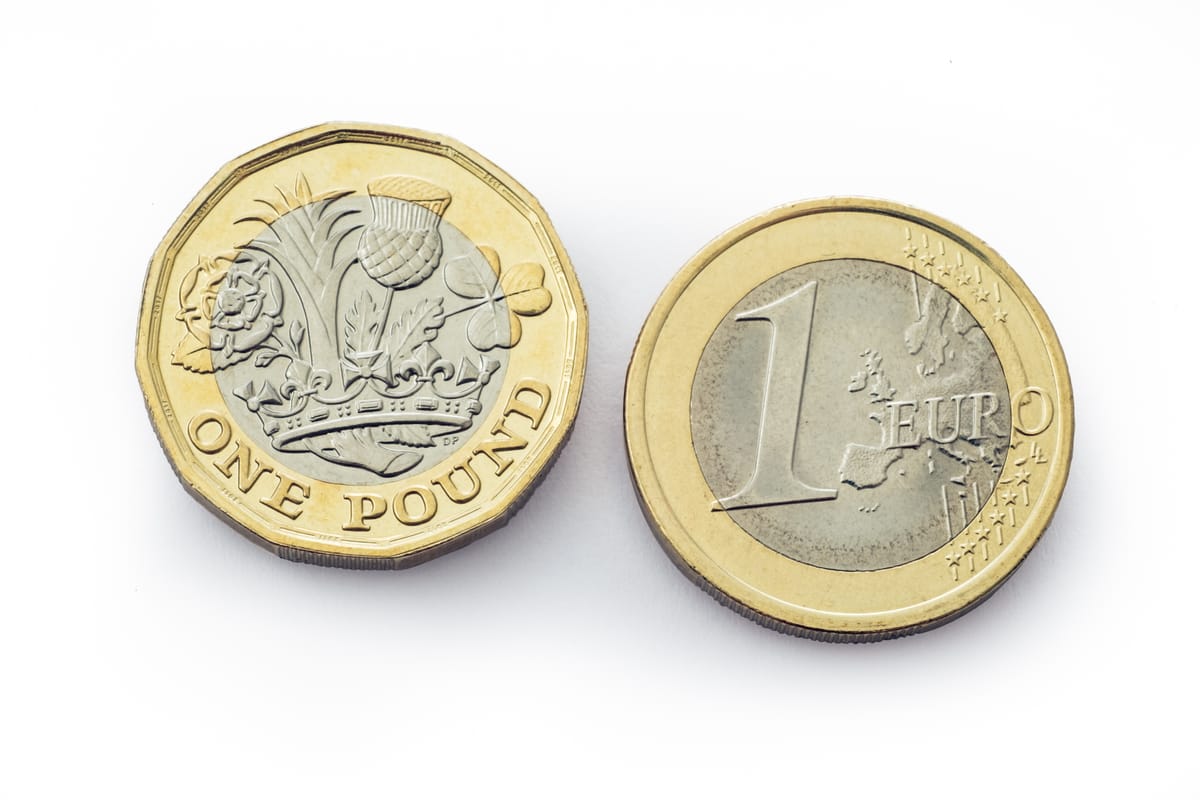GBP/EUR exchange rate week review: pound slumps amid cooler-than-forecast inflation and downbeat Spring Statement
24/03/2025 to 28/03/2025: The pond euro exchange rate was dealt a flurry of chastening blows by cooler-than-forecast, the Spring Statement, and recession fears.

Monday
The pound euro (GBP/EUR) exchange rate firmed to around €1.19 after UK service sector growth jumped to a seven-month high.
Activity in the UK’s dominant sector reported a pickup in March, reaching its highest levels since August. The preliminary reading of the UK S&P Purchasing Managers' Index (PMI) for services came in at 53.2 in March, up from 51.0 the previous month.
The single currency edged lower after the Eurozone’s PMI readings came in slightly weaker than expected. A softer-than-forecast performance in the services sector prompted speculation that the European Central Bank (ECB) may cut interest rates again in April.
Tuesday
The pound continued to strengthen against the safer euro, rising to within touching distance of the €1.20 level amid a risk-on market mood.
However, a larger-than-expected slump in sales volumes reported by the Confederation of British Industry (CBI) and the looming Spring Statement capped the pound’s gains.
The single currency softened despite Germany’s latest business climate indicator hitting an eight-month high in March and rising hopes of a breakthrough in Russia-Ukraine peace talks.
Wednesday
The pound slumped after a cooler-than-forecast UK consumer price index (CPI) led investors to ramp up bets on a Bank of England (BoE) interest rate cut in May. Inflation decreased to 2.8% in February, down from a rate of 3% at the start of the year.
Attention then turned to Chancellor Rachel Reeves Spring Statement, which confirmed the UK’s growth forecast for this year has been halved. This increased selling pressure on the UK currency, causing it to fall around half a percent to €1.194.
Contact a currency specialist to discover how they can help you take control of exchange rates.
Thursday
The pound ticked above the €1.20 benchmark against the euro amid fears that hostile global trade policies will have a more severe impact on the Eurozone economy than the UK’s.
Worries about worsening EU-US trade tensions prevented the euro from benefitting from its strong negative correlation with a weakening dollar.
Friday
The pound plunged over half a percent into the €1.19 mid-range as recession fears lingered following the UK’s latest GDP print.
The UK economy grew by a meagre 0.1% in the last three months of 2024, confirming that it remains just above recession territory. The modest growth in the fourth quarter was driven by the services sector, also 0.1%, which outweighed a 0.3% contraction in construction.
The pound’s fall was cushioned slightly by news of a 1% rise in British retail sales in February that exceeded economists’ expectations, who had predicted a 0.4% contraction.
The euro also faced selling pressure after figures showed economic sentiment and consumer confidence across Europe weakened unexpectedly in March.
Looking ahead
A data-light week in the UK economic calendar means investors will remain focused on tariff developments, specifically potential retaliatory measures. If the EU takes action against the US, the euro could falter.
Several notable releases from the Eurozone hit the headlines, including German retail sales and inflation data on Monday and the core harmonized index of consumer prices on Tuesday.
